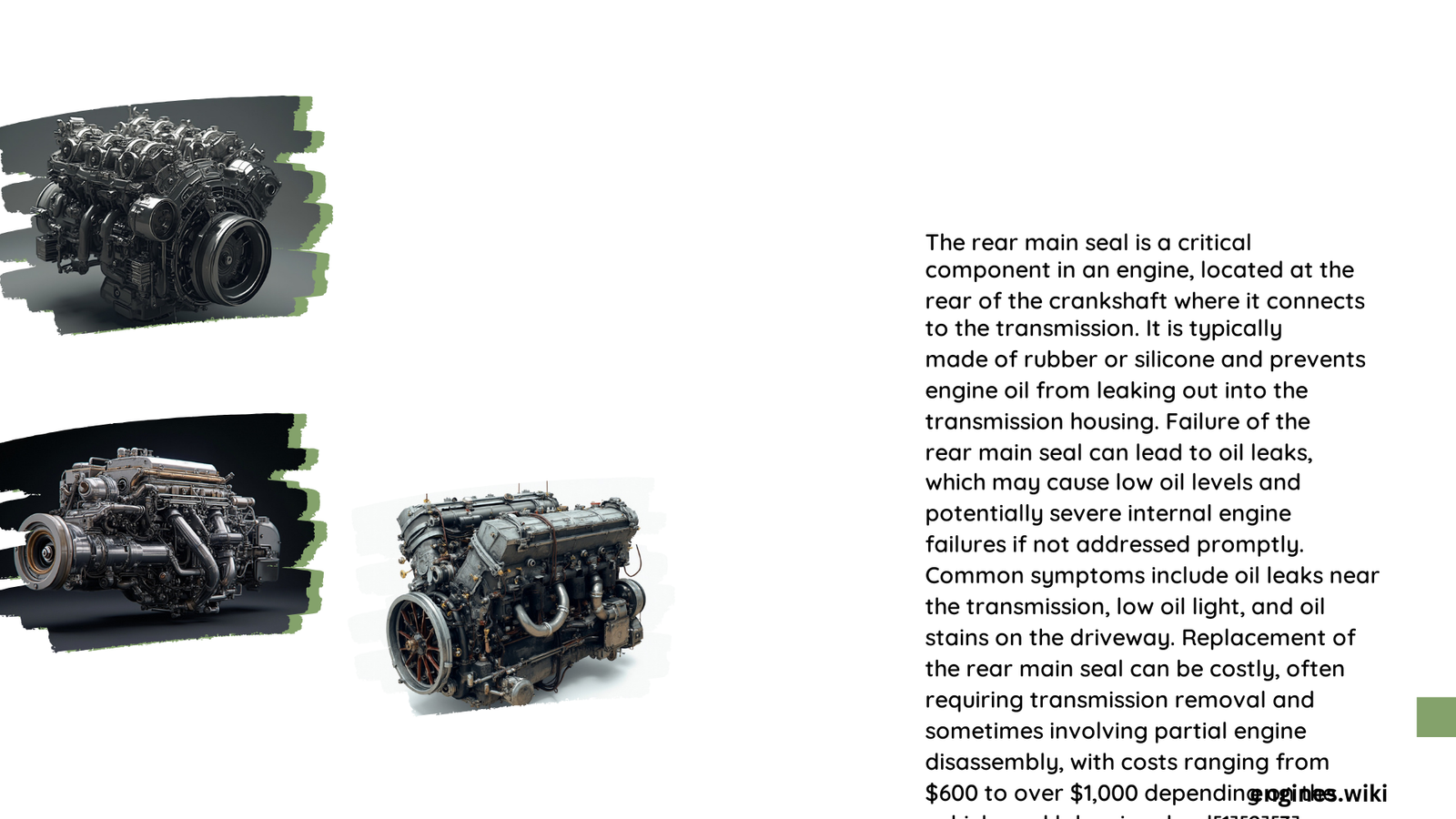An engine rear main seal is a critical component that prevents oil leakage between the engine block and crankshaft, serving as a crucial barrier to maintain proper lubrication and prevent potential engine damage. When this seal deteriorates, it can lead to significant oil loss, potential engine performance issues, and costly repairs if not addressed promptly. Understanding its function, symptoms, and replacement process is essential for vehicle owners and automotive professionals.
What Causes Rear Main Seal Failure?
Mechanical Stress Factors
- Continuous crankshaft rotation
- High temperature engine environments
- Extreme pressure variations
- Aging rubber material degradation
Common Wear Mechanisms
- Thermal Expansion: Repeated heating and cooling cycles
- Mechanical Friction: Constant crankshaft movement
- Chemical Breakdown: Oil additives and environmental contaminants
How to Detect Rear Main Seal Leakage?

Visual Inspection Techniques
- Check for oil puddles underneath vehicle
- Examine undercarriage for oil spray patterns
- Inspect crankshaft and transmission connection points
Diagnostic Indicators
| Symptom | Severity Level | Recommended Action |
|---|---|---|
| Minor Oil Spots | Low | Monitor and Schedule Inspection |
| Consistent Oil Drops | Medium | Professional Diagnostic |
| Large Oil Puddles | High | Immediate Replacement |
What Are Replacement Strategies?
Professional Replacement Steps
- Vehicle Preparation
- Lift and secure vehicle
- Drain engine oil
- Disconnect transmission
- Seal Removal Process
- Extract old seal carefully
- Clean mounting surface
- Inspect surrounding components
- New Seal Installation
- Use specialized installation tools
- Ensure proper alignment
- Apply recommended lubricants
Cost Considerations
- Parts Cost: $20 – $50
- Labor Cost: $500 – $1,200
- Total Replacement: $800 – $2,500
How to Prevent Premature Failure?
Maintenance Recommendations
- Regular oil changes
- Use high-quality engine oils
- Monitor crankshaft bearing wear
- Avoid extreme temperature fluctuations
- Perform periodic seal inspections
Warning Signs to Watch
- Blue exhaust smoke
- Burning oil smell
- Rapid oil consumption
- Fluctuating engine performance
Technical Specifications
Material Composition
- Typically made from:
- Nitrile rubber
- Silicone-based compounds
- Advanced synthetic elastomers
Performance Parameters
- Operating Temperature Range: -40°F to 300°F
- Pressure Resistance: Up to 50 PSI
- Typical Lifespan: 80,000 – 150,000 miles
Expert Recommendations
Professional Insights
- Always use vehicle-specific seal designs
- Consider professional installation
- Combine seal replacement with related maintenance
Potential Complications
- Improper installation can cause immediate failure
- Underlying engine issues might accelerate seal deterioration
- Requires specialized mechanical knowledge
Conclusion
Understanding engine rear main seal dynamics helps prevent catastrophic engine failures and ensures long-term vehicle reliability. Proactive maintenance and timely interventions are key to preserving your vehicle’s performance and longevity.
